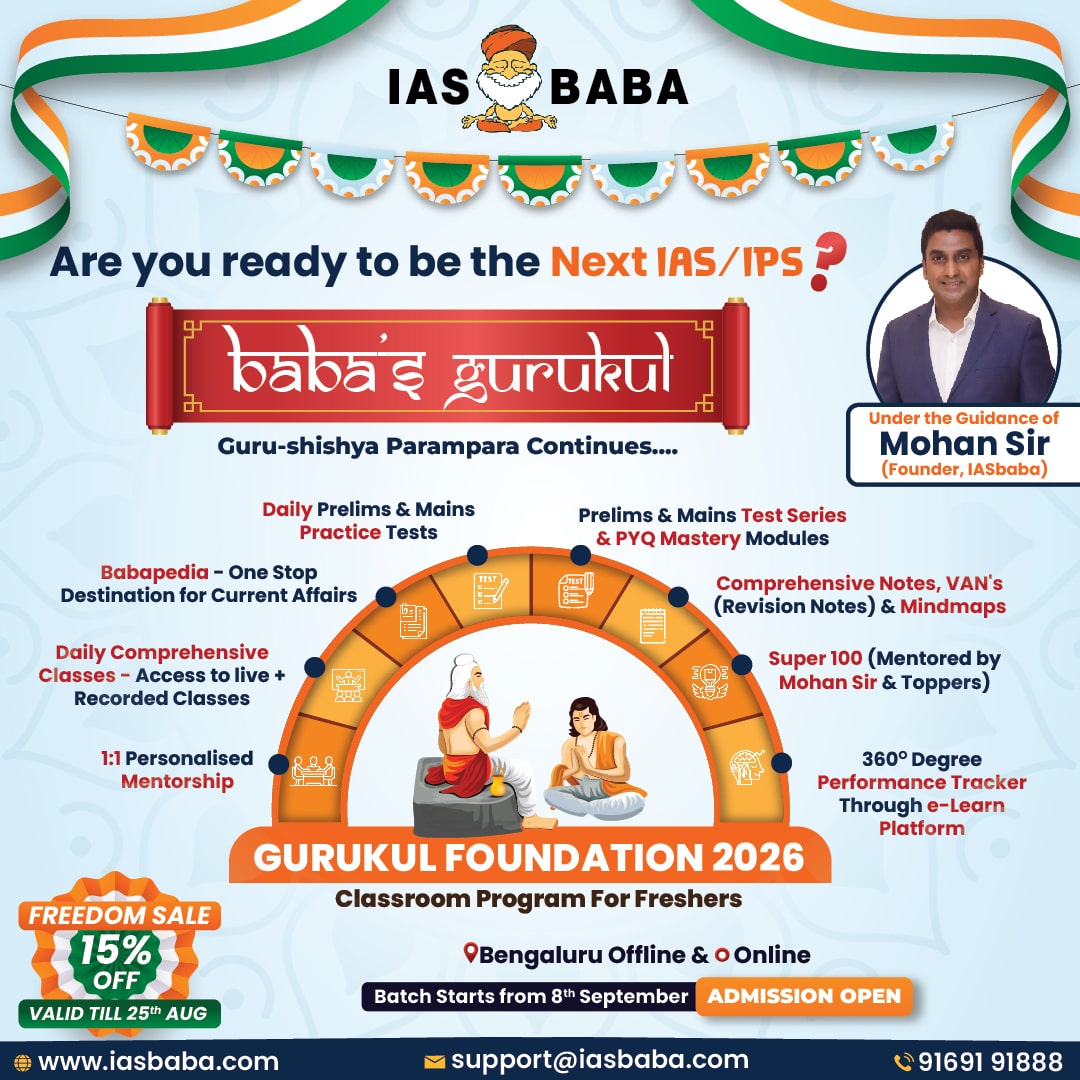Think and Learn, TLP Mains 2015, UPSC, UPSC Mains- Think and Learn-2015
TLP: GS Mains Synopsis [Day 76]
Q.1) American Constitution contains just seven articles and it came into force in 1789. Since then there has only been twenty seven amendments. On contrary Indian Constitution is the bulkiest constitution that has been amended more than 100 times. Does this mean that Indian Constitution is flawed and has to be corrected from time to time?
The Top Answer for this Question is written by – Mumtaz Ahmad
Ans) The procedure for amendment makes the Indian constitution neither too rigid nor too flexible. On the other hand,the procedure for amending the US constitution is a quite tedious task. Following points elaborate this difference:
1. Much of the provisions of the Indian constitution could be easily amended by an ordinary legislation. Such provisions are lacking in US constitution.
2. For some other provisions to be amended, a special majority i.e. more than 50% of total strength and 2/3rd present and voting is required in our constitution which is 3/4th in the latter.
3. The requirement relating to ratification by the state legislation is more liberal for amending Indian constitution (50%) than the US (75%).
4. Once the CA bill goes to the president he could not veto and must give his assent. There is no such restriction for US president.
The dynamicity in the Indian society and polity as compared to the US is much diverse and vast whether it is cultural, societal or lingual. In order to address these changing dynamics, a constitution should be well balanced i.e. neither rigid nor flexible. The situation in US is dramatically different where majority of the population speaks one language and profess one religion. In this context, the large number of CAs in past 70 years seems justified.
Q.2) During Constitutional debates, Dr B R Ambedkar advocated for reservation of socially and economically backward classes. Now, even after almost seven decades of independence, reservation still exists. Recently demands are being raised for reverse discrimination. What is reverse discrimination? What steps can be taken to check these demands?
The Top Answer for this Question is written by – Draconian
Ans) As Dalai lama quoted “Of all the various delusions, the sense of discrimination between oneself and others is the worst form, as it creates nothing but unpleasant “. which rightly fits on Indian reservation system which form a new tantrum out of it .e Reverse discrimination which is a claim that occurs when a member or members of a majority are discriminated against on the basis of a protected factor, such as race or gender.
Examples of Reverse discrimination
–>Hiring of non-Caucasians and women (rather than Caucasians and men)
–>Hiring or promoting women solely on the basis of their gender over equally or more qualified males;
–>Rejecting an applicant for school while admitting a minority applicant solely on the basis of race
–>Non-hiring or firing of persons under 40 years of age
To uplift and empower the so called backward groups to lead a dignified life as Quota is necessary for transcending caste, not for perpetuating it. As per constitution, Article 15 and 16 provides for making reservations of SC, while article 29 and 30 for securing rights of religious and linguistic minorities Also, DPSPs of Art. 38 & 39(welfare state) and Fundamental rights stand guard to the rights of such minorities like securing minimum wages, free legal aid, free education.
Steps to Curb Reverse discrimination
—The focus should therefore be onmaximizing the educational infrastructure more fund allocation and that of reforming the entire teaching and learning process with a setup of committee to review the implementation of allocation of funds at the primary and secondary education level.
—Benefits if provided should be restricted per family to a maximum of two children irrespective of number of children in a family which will regulate their population giving way to the principle of equality
—However if it is deemed necessary reservation is to be implemented then its done on the basis of satisfying the minimum criteria of marks which every student, irrespective of caste or class has to secure
–There should be Consideration regarding the Hon’ble Supreme Court’s observation in Indra Sawhney v. Union of India on the exclusion of creamy layer from the benefits of reservation and Once an OBC is self sufficient then include him in the general category
—Set a deadline for eliminating all kinds of reservations benefits provided to SC/ST & OBCs
Post-independence, caste based reservations have served their purpose to an extent. But if we look at present scenario there are anomalies and self defeating tendencies pertaining to it. This avails that Indian politics is in dire straits, where the people in power do not want to create an egalitarian society. Sir Ernest Benn, once described politics as the art of looking for trouble,finding it whether it exists or not, diagnosing it incorrectly, and applying the wrong remedy and as Reservation in India we have the prime examples for the statement!
Q.3) Many provisions of Directive Principles of State Policy (DPSP) were put under this part because at the time of Independence the economic condition of India was not as such to make them justiciable. Do you think that now since we have progressed economically, some of these provisions should be made justiciable in court of law ? If yes, what provisions and Why ? If no, Why not?
The Top Answer for this Question is written by – Draconian
Ans) An important feature of the constitution is the DPSPs mentioned in Part IV from Article 36 to Article 51 of the Indian Constitution although are asserted to be “fundamental in the governance of the country,” they are not legally enforceable. Instead, they are guidelines for creating a social order characterized by social, economic, and political justice, liberty, equality, and fraternity as enunciated in the constitution’s preamble.
Though they are non-justifiable but they can be seen in many of the policies of the successive governments that has enacted social, labour and economic legislation and the efforts of translating the directive principles into reality are first of all evident in the five year plans as Sir B. N. Rau regards them as “moral precepts”with an educative value
—the 73rd and 74th constitution amendment act. 1992 to build Panchayati Raj Institutions as a administrative unit which fulfill villagers long standing dreams by their sufficient support and participation.
–The MGNREGA which was introduced in 2005 as NREGA to enforce the directive principle embodied in the article 39, 41.
–For the promotion of cottage industries (Art.43), steps have been taken to encourage the masses while Government has established the All India Handicrafts Board, The All India Hand-loom Board, The Small Scale Industries Board, The Silk Board, The Coir Board etc. for promotion of cottage industries.
—Various legislation such as The Employees State Insurance Act, Workmen Compensation Act, The
Minimum Wages Act etc. some of the efforts which try to establish a just order taking guidelines from the DPSP. Government enacted Equal Remuneration Act in 1976which provides equal pay for equal work for both men and women
—for raising standard of living ( Art.47)adopted as the first ever large scale program called Community
Development Project in 1952 for rural re-construction in the field of communication, transport, housing facilities, sanitation , agriculture, education etc.
—The Employees State Insurance Act, Workmen Compensation Act, The Minimum Wages Act etc.are some of the efforts which try to establish a just order taking guidelines from the DPSP .
—The principle of International peace and security enshrined in Art.51 finds its full expression in the external policy of India.
—The objective of universal elementary education was in the development program and after the 86th amendment act which inserted Article 21A in the constitution, the state seeks to provide free and compulsory education to all children between 6-14 years.
As, Ambedkar considered them as powerful instruments for the transformation of India from a political democracy into an economic democracy.while according to Granville Austin, they are “positive obligations”… to find a piddle way between individual liberty and Public good.
The directives constitute a sort of “instrument of instruction” to all governments in the great task of transforming a laissez-fire society into a welfare state, a socialistic pattern of society and eventually into a socialist society.
High Order Thinking
Q.1) Allowing foreign law firms to operate in India will not only promote competition and enhance the efficiency of Indian law firms but also reinforce the commitment of the state to do away with the roadblocks that hinder the flow of foreign investment. However, adequate safeguards should be put in place before foreign law firms are permitted in India. Comment.
The Top Answer for this Question is written by – Rumbler488
Ans) In the contemporary era of globalization, almost no sector is free from its positive and negative consequences. In this light, allowing foreign firms to operate in Indian legal market (which has hitherto remained untouched) will have the following consequences:
1) It will increase the efficiency of Indian law firms as they will be forced to innovate in light of competing with global best practices and high compensatory packages offered by law firms. This will also attract the best minds of the country towards the legal profession.
2) With the focus on liberalization, ability of MNCs to hire the best global legislative firms in India along with the advent of dedicated foreign law firms in Indian market will also facilitate ‘ease of business’ in India along with bringing substantial amount of foreign investment.
However, certain safeguards need to be put in place in order to ensure smooth integration of these firms in the Indian legal framework:
1) Adequate protection to the nascent Indian law firms in order to ensure that they do not get obliterated by the foreign firms. This can be done in the form of mandating joint ventures with majority Indian ownership.
2) A pro-active regulatory regime must be put in place to avoid proliferation of bogus firms that may jeopardize the sanctity of Indian legislative process.
3) Advent of foreign law firms may have inflationary effect on the cost of litigation which may be harmful, especially for poor people. Hence, a certain percentage of law firms can be directed to handle indigent cases (as is the case in Priority Sector Lending for Banks)
In essence, a strong regulatory framework coupled with adequate protection can help us popularize the slogan ‘legislate in India’.
Q.2) Ethics in politics is at the all time low. Elections are being contested by manufacturing perceptions and on medieval issues with hardly any trace of accountability. Does this state of politics in India reflect badly on the mindset of the society? Critically examine.
The Top Answer for this Question is written by – SBT57
Ans)
Image 1 – https://a.disquscdn.com/uploads/mediaembed/images/2799/7324/original.jpg
Image 2 – https://a.disquscdn.com/uploads/mediaembed/images/2799/7325/original.jpg
Q.3) The 40th anniversary of the imposition of emergency was an opportune moment to contemplate about the resilience of the institutions to withstand any onslaught on democracy in India. What do you think of the 1975 emergency? What lessons did we learnt from it? Did the emergency work as a bitter antibiotic that rather strengthened Indian democracy? Examine.
The Top Answer for this Question is written by – The Rock
Ans) Against the backdrop of anti-corruption movements led by Jay Prakash Narayan , rising poverty , arbitrary judicial appointments and criticisms by media and opposition , emergency was imposed.
Though Emergency was justified for maintaining discipline , improving efficiency of government functioning , especially in essential services and maintaining the unity and integrity of India , the emergency led to restriction on right to free speech and expression by banning press and public meetings . Right to life and liberty was curbed by arbitrary use of preventive detention against political leaders and common public . Unpopular population control programmes , concentration of powers by executive by 42nd amendment and political appointments led to criticism of government across the public , civil society and international organisations
Post emergency , 44th constitutional amendment was introduced to reverse the wrongdoings , by strengthening the emergency and fundamental rights provisions . Right to life was expanded in Maneka Gandhi case , while balance between fundamental rights and directive principles of state policy and separation of powers between executive and judiciary was affirmed as basic structure , under Minerva case . which strengthened the institutions .
Thus , Emergency worked as a bitter antibiotic as importance of political rights , parliamentary democracy and constitutionalism was realised. However , this antibiotic could have been avoided if proactive measures like reasonable restrictions , separation of powers , constitutional means of opposition, etc were adhered to.














